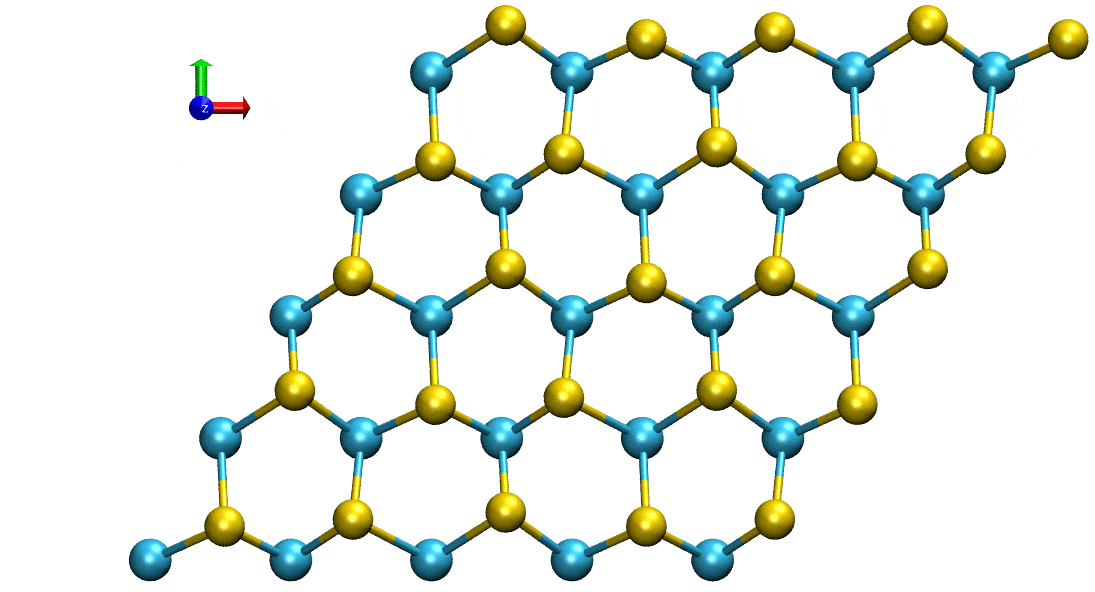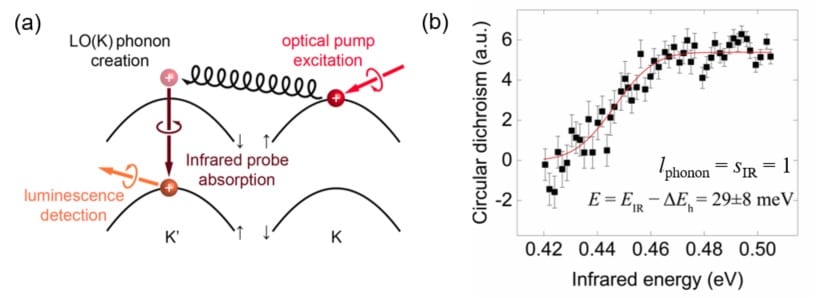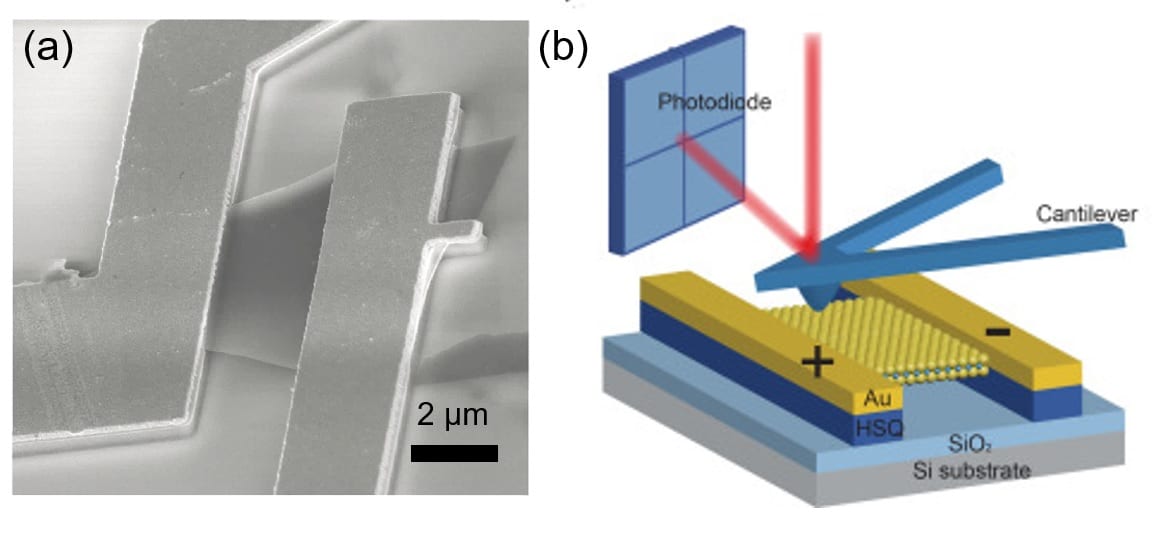For the first time, we have experimentally demonstrated that the vibration of atomic lattice may possess topological attributes. These chiral phonons are promising for quantum memories and transducers (Zhu et al, Science 359, 579).
In a 2D asymmetric hexagonal lattice, such as monolayer WSe2, the atoms rotate, instead of shaking back and forth, for phonons propagating with a momentum of K and -K.

The valley optical phonon mode LO(K) contains unidirectional atomic rotation.
The direction of the rotation is determined by the direction of the momentum, as seen from the circular polarization of the light absorption that excites the phonons.

Phonons created by a pair of light pulses show circular dichroism.
For more introduction and stories about this research, please visit LBL News Center.



